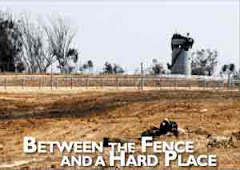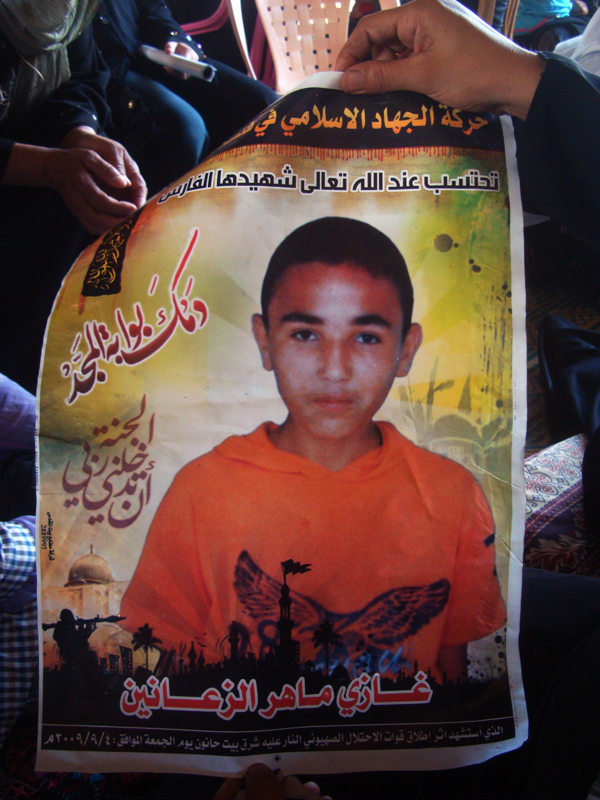
Posted on the ISM webpage: January 30, 2009
Israeli armed forces opened fire on a group of Human Rights Workers (HRWs) and civilians in the Beit Hannoun area of the Gaza Strip on Thursday 29th January. International HRWs were accompanying residents of Beit Hannoun, in the far north of the Gaza Strip, to their homes, in order to salvage belongings from the rubble, after the homes were bulldozed by Israeli forces during the Israeli war on Gaza.
One Palestinian family, the Tarrabin family, were anxious to try to retrieve important items, such as identity cards; cash; and clothes, that Israeli soldiers prevented them from taking with them when they were evicted moments before their home was destroyed. Residents had been further prevented from returning to their homes, which lie in close proximity to the Green Line, by Israeli military firing upon them whenever they attempted to enter the area. Families were advised by soldiers, upon being evicted from their homes, that the area had been declared a “Closed Military Zone”.
The group, joined by a Malaysian film crew, was able to successfully enter the prohibited area, and salvage a number of personal items and documents – however the vast majority of possessions were buried beneath mounds of rubble and dirt. “We would need to bring in a bulldozer to find anything else”, remarked one resident.
As the group prepared to leave the destroyed house, however, Israeli soldiers, who had been patrolling behind the Green Line throughout the endeavour, opened fire, shooting a number of rounds. Fortunately, none were injured, though HRWs report hearing the bullets whistle past their heads.
Despite the obvious attempt at intimidation, Manwar Tarrabin was relieved to have the opportunity to return to her house and collect the belongings that were found, as she and her five family members were evicted from their home with just the clothes on their backs – soldiers refusing to allow them to take any belongings with them. She and her 22 year old daughter were forced to stand by, watching helplessly, as two Israeli military bulldozers demolished her home and everything in it, on 17th January – just one day before Israel declared its supposed ceasefire.
HRWs then continued on to another house nearby, with the Abu Jereme family, whose corrugated iron house was not demolished, but from which they were evicted on 27th December, the first day of Israel’s offensive on Gaza, when Israeli “Special Forces” occupied their home. Freije Abu Jeremi pointed out what had been their barn-house, containing 20 sheep; as well as chickens and rabbits. “The soldiers shot all the sheep in the legs”, she recalled, “before they demolished the shed”. This intentional killing of livestock, took place throughout the Gaza Strip during the Israeli Operation “Cast Lead”. Whilst dismissed by many Palestinian residents as the actions of deranged individuals, the emerging pattern is one of economic oppression – of the intentional destruction of Palestinian livelihoods.
Approximately 80 houses were demolished in the “buffer zone” area to the north and east of Beit Hannoun – in the lands that abut the Green Line – rendering at least 400 residents homeless. 20 homes were demolished in Sikka street alone, which leads up to the Erez border crossing.
Whilst before Israel’s war on Gaza, the Israeli-enforced “buffer-zone” on the Palestinian side of the Green Line extended 300m from the electrified fence. Now it is extremely dangerous to enter lands that are 1.5 kilometres from the Green Line.
This situation not only affects residents in the north, but is played out in all border areas of the Gaza Strip. In every region that borders the Green Line, residents are reporting similar incidents – that, despite the public declaration of a cease-fire, Israeli forces continue to fire on Palestinians on a daily basis, with two farmers killed since the ceasefire supposedly came into effect. Such violations not only make a mockery of any notion of a ceasefire, but also work to effectively annex Palestinian land, by rendering it uninhabitable. Indeed, combined with the demolition of houses in these areas, such actions are indications of a clear policy of ethnic cleansing.





 With 29 family members killed during the attacks on the Zaytoun neighbourhood in Gaza city, however, it seems a strange concern. But life marches on, and the other children have gone back to school. Tugging at the clothes they were wearing, the children explain that, now, three weeks after their homes were destroyed, what they’re wearing is all they have. And, it seems, they’re not going to school wearing that.
With 29 family members killed during the attacks on the Zaytoun neighbourhood in Gaza city, however, it seems a strange concern. But life marches on, and the other children have gone back to school. Tugging at the clothes they were wearing, the children explain that, now, three weeks after their homes were destroyed, what they’re wearing is all they have. And, it seems, they’re not going to school wearing that.


